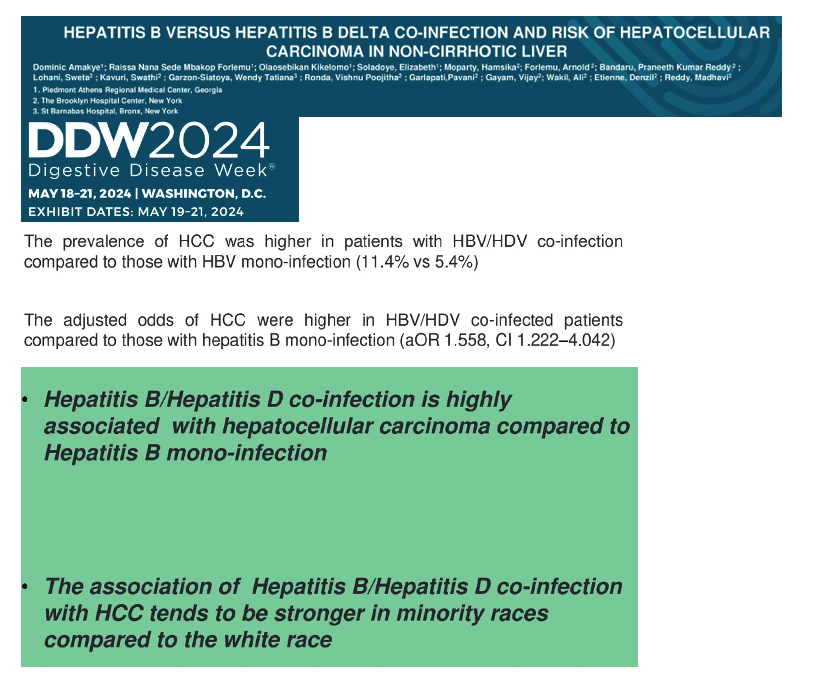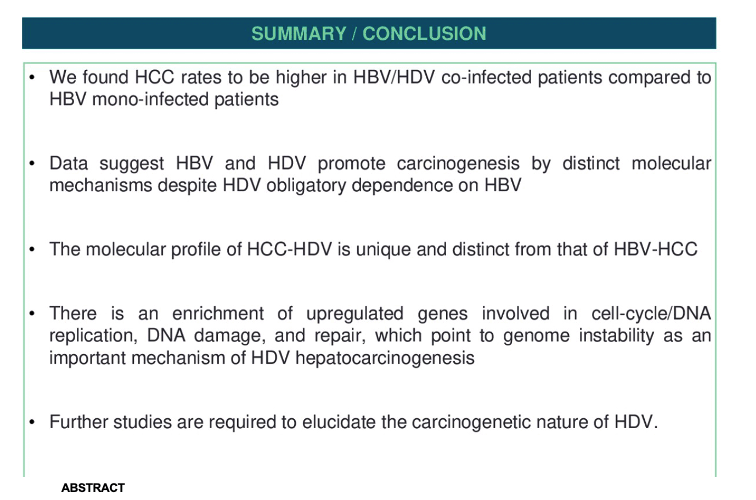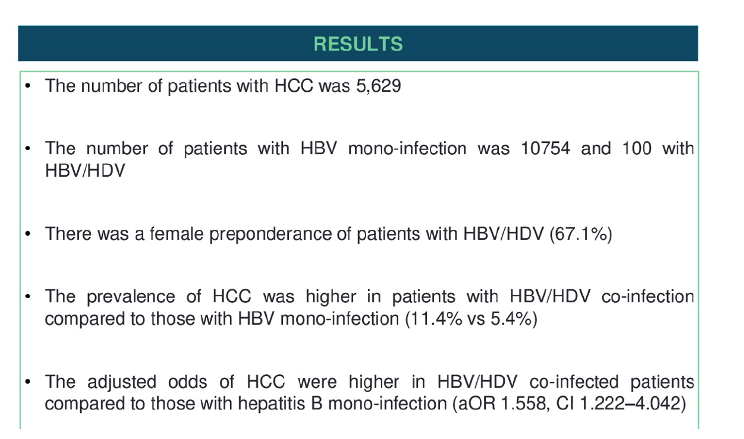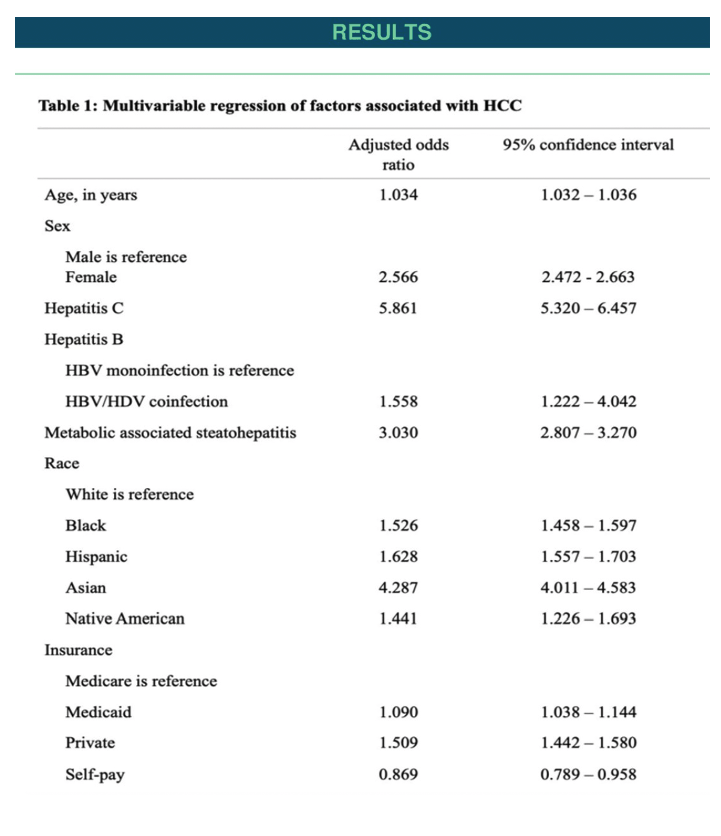 |
 |
 |
| |
HEPATITIS B VERSUS HEPATITIS B DELTA CO-INFECTION
AND RISK OF HEPATOCELLULAR CARCINOMA IN NON-CIRRHOTIC LIVER
|
| |
| |


ABSTRACT
Introduction
Hepatitis D virus (HDV) super, and co-infection in patients with chronic hepatitis B (HBV) is known to lead to accelerated liver injury, early cirrhosis, and decompensation. It also known that HBV is oncogenic and can lead to HCC in the absence of cirrhosis. Whether the prevalence and clinical aspects of hepatocellular carcinoma (HCC) in non-cirrhotic liver differ in HBV/HDV co-infected patients compared to those with HBV mono-infection is still the subject of speculation. The aim of this study was to evaluate HCC rates in patients with hepatitis B with and without hepatitis D co-infection, in the absence of cirrhosis.
Method
We conducted a nationwide review from 2016 and 2017 using the National Inpatient Sample (NIS). NIS is the largest publicly available all-payer inpatient database in the United States with more than seven million hospital stays each year, as a part of the Healthcare Cost and Utilization Project (HCUP). Patients a 18 years old with chronic hepatitis B, hepatitis D, and HCC were identified using the International Classification of Diseases, Tenth Revision, Clinical Modification (ICD-10-CM) codes. Patients with cirrhosis were excluded from this study. Chi-square tests was used to obtain prevalence and unadjusted odds ratios between hepatitis C and HCC. Logistic regression was used to assess the independent association between both variables. Adjusted odds ratios and confidence intervals (CI) at 95% were reported.
Results
The number of patients with HCC was 5,629. That with HBV mono-infection was 10754 and 100 with HBV/HDV. There was a female preponderance of patients with HBV/HDV (67.1%). The prevalence of HCC was higher in patients with HBV/HDV co-infection compared to those with HBV mono-infection (11.4% vs 5.4%). The adjusted odds of HCC where higher in HBV/HDV co-infected patients compared to those with hepatitis B mono-infection (aOR 1.558, CI 1.222 - 4.042). Table 1
Conclusion
We found HCC rates to be higher in HBV/HDV co-infected patients compared to HBV mono-infected patients. Data suggest HBV and HDV promote carcinogenesis by distinct molecular mechanisms despite HDV obligatory dependence on HBV. The molecular profile of HCC-HDV is unique and distinct from that of HBV-HCC and has an enrichment of upregulated genes involved in cell-cycle/DNA replication, DNA damage and repair, which point to genome instability as an important mechanism of HDV hepatocarcinogenesis. Further studies are required to elucidate the carcinogenetic nature of HDV.



|
| |
|
 |
 |
|
|